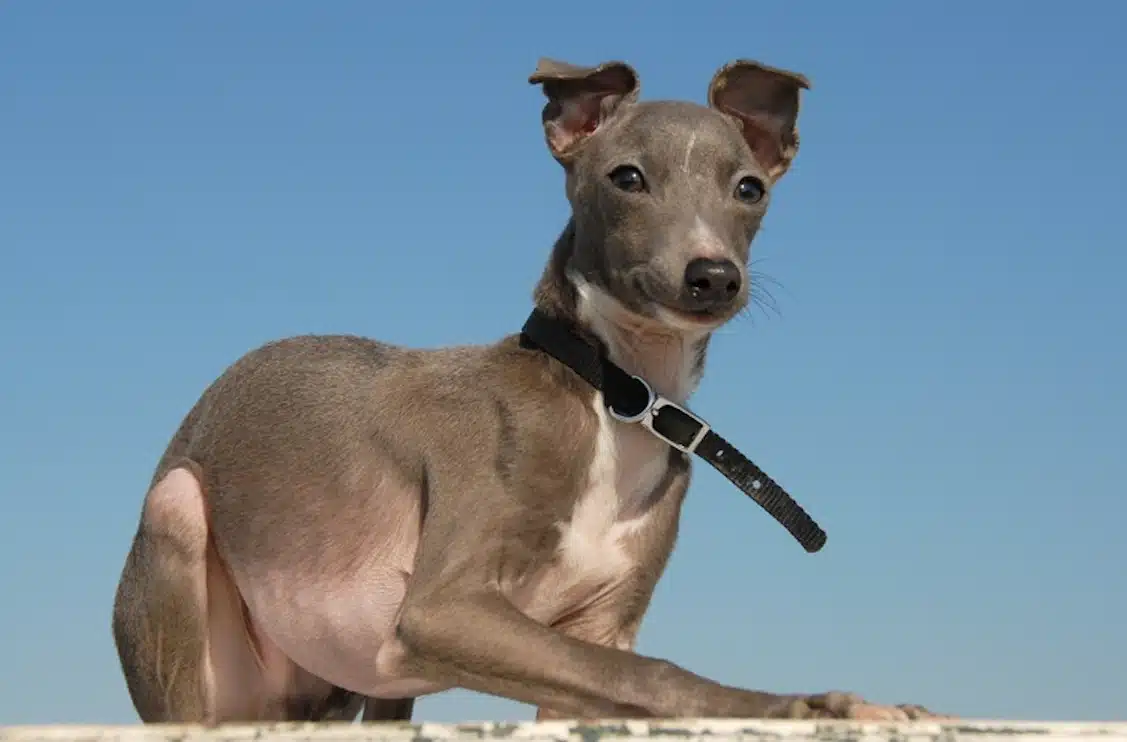Italian Greyhound: The Graceful and Affectionate Miniature Sighthound
🐶 Introduction
The Italian Greyhound (IG) is a petite, elegant, and affectionate breed known for its slender frame and loving nature. As the smaller cousin to the standard Greyhound, this breed combines speed and grace with a deep desire to cuddle. Whether you’re looking for a lively playmate or a devoted lap dog, the Italian Greyhound offers charm, agility, and unwavering companionship in a small, graceful package.
🐾 Italian Greyhound Breed Overview
- Size: Small
- Weight: 7-14 lbs
- Lifespan: 13-15 years
- Temperament: Affectionate, Playful, Sensitive
- Coat: Short, smooth coat
- Exercise Needs: Moderate
- Group: Toy
📝 History and Origin
The Italian Greyhound’s history stretches back over 2,000 years to ancient Mediterranean civilizations. Favored by nobles and aristocrats throughout history, this breed’s delicate beauty and loving personality made it a sought-after companion in royal courts across Italy and beyond.
Highlights:
- Ancient breed with Roman and Mediterranean origins.
- Beloved by European nobility, particularly in Renaissance Italy.
- Bred primarily as a companion but retains strong prey drive.
🐕 Physical Characteristics
The IG is defined by its fine-boned, graceful frame and elegant features. Key physical traits include:
- ✔ Slim, delicate body built for speed and agility.
- ✔ Long, slender legs and a fine, tapering tail.
- ✔ Short, sleek coat that highlights the breed’s elegant lines.
- ✔ Large, expressive eyes full of warmth and curiosity.
🧡 Temperament and Personality
This breed is known for its affectionate, playful nature, and desire to stay close to its favorite humans. Italian Greyhounds thrive on love and attention.
Key Traits:
- ✅ Extremely affectionate: Loves being held and cuddled.
- ✅ Playful and fun-loving: Enjoys games and zoomies.
- ✅ Sensitive and gentle: Responds best to soft, positive training.
- ✅ Can be shy: Benefits greatly from early socialization.
🏃 Exercise and Training Needs of the Italian Greyhound
Despite their small size, IG’s are athletic and love to run. Regular exercise and mental stimulation are important for their happiness.
Recommendations:
- ✔ Daily walks combined with short play sessions.
- ✔ Safe, fenced areas for off-leash sprints.
- ✔ Positive reinforcement training—harsh methods are counterproductive.
- ✔ Socialization with new people, dogs, and environments builds confidence.
- ✔ Learn How to Train Your Dog on Our Dog Training Page!
✂️ Grooming and Care
The Italian Greyhound’s short coat is one of the easiest to maintain, but they still need basic care to stay healthy and comfortable.
Grooming Tips:
- ✔ Weekly brushing with a soft cloth or grooming mitt.
- ✔ Bathe occasionally, especially after outdoor adventures.
- ✔ Regular dental care is essential—this breed is prone to dental issues.
- ✔ Trim nails frequently, as they grow fast.
- ✔ Check ears regularly for cleanliness.
- ✔ Learn How to Groom Your Dog on Our Dog Grooming Page!
🏥 Common Health Concerns
Dogs of this breed are generally healthy, but their delicate build and genetic factors mean they can be prone to certain health issues.
Potential Issues in the Italian Greyhound:
- 🔴 Dental Disease: Their small mouths are prone to tartar buildup and tooth loss.
- 🔴 Leg Fractures: Their fine bones can be easily injured if they jump from heights.
- 🔴 Progressive Retinal Atrophy (PRA): An inherited eye disease.
- 🔴 Epilepsy: Seizures have been reported in some lines.
- 🔴 Cold Sensitivity: Their thin coats offer little insulation.
🔴 You can find detailed information about these conditions in our Dog Health Dictionary.
✅ Pros and ❌ Cons of Owning an Italian Greyhound
✅ Pros:
- ✔ Exceptionally affectionate and loving.
- ✔ Low-shedding, easy-to-maintain coat.
- ✔ Compact size suits apartments and smaller homes.
- ✔ Playful and entertaining personality.
❌ Cons:
- ✘ Fragile bones require careful handling.
- ✘ Prone to separation anxiety if left alone too long.
- ✘ Sensitive to cold and needs warm clothing in chilly weather.
- ✘ House training can be challenging—patience is required.
🏡 Finding an Italian Greyhound
If you are thinking about adding an Italian Greyhound to your family, you have two main options:
- 🐶 Find a Reliable Rescue:
- Read our article about how to adopt from a reliable dog rescue.
- Find reliable rescues through our Dog Rescue Directory.
- 👩 Find a Responsible Breeder:
- Read our article about buying a healthy puppy from a responsible breeder.
- Find responsible breeders through our Dog Breeders Directory.
💖 Conclusion: Why the Italian Greyhound Makes a Great Companion
The IG combines elegance, athleticism, and unwavering affection into one charming little package. Perfect for families who want a devoted companion with a playful streak, this breed thrives in homes where they receive plenty of attention and gentle care. If you’re ready for a loving, graceful, and occasionally mischievous companion, the Italian Greyhound will reward you with years of affection and delightful antics.

